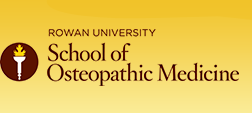Keywords
cervical cancer, Hispanic, HPV, human papilloma virus, screening
Date of Presentation
5-6-2021 12:00 AM
Poster Abstract
Background
• Nationally declining cervical cancer rates are still high amongst minority women in NJ, with Hispanic women being affected the most.
• The Human Papilloma Virus (HPV) is the most common sexually transmitted infection and can lead to cervical cancer
• Administration of the 9-valent HPV vaccine can prevent infection and progression to cancer
• Regular cervical cancer screenings allow for better outcomes
• Various barriers prevent people with a cervix receiving the vaccine
• Various barriers prevent people with a cervix aged >/= 30 from receiving regular cervical cancer screenings
Conclusions
- Improved physician recommendation is required for the HPV vaccine and HPV testing
• Improved outreach to high-risk populations is required
• Education on programs such as NJCEED and the National Breast and Cervical Cancer Early Detection Program provide free screenings for low income and/or uninsured individuals
• Education on free vaccine programs
Disciplines
Community Health and Preventive Medicine | Female Urogenital Diseases and Pregnancy Complications | Medicine and Health Sciences | Neoplasms | Obstetrics and Gynecology | Oncology
Included in
Community Health and Preventive Medicine Commons, Female Urogenital Diseases and Pregnancy Complications Commons, Neoplasms Commons, Obstetrics and Gynecology Commons, Oncology Commons
Assessment of Factors Preventing Adequate Decline in Cervical Cancer Rates Amongst Minority Women in New Jersey
Background
• Nationally declining cervical cancer rates are still high amongst minority women in NJ, with Hispanic women being affected the most.
• The Human Papilloma Virus (HPV) is the most common sexually transmitted infection and can lead to cervical cancer
• Administration of the 9-valent HPV vaccine can prevent infection and progression to cancer
• Regular cervical cancer screenings allow for better outcomes
• Various barriers prevent people with a cervix receiving the vaccine
• Various barriers prevent people with a cervix aged >/= 30 from receiving regular cervical cancer screenings
Conclusions
- Improved physician recommendation is required for the HPV vaccine and HPV testing
• Improved outreach to high-risk populations is required
• Education on programs such as NJCEED and the National Breast and Cervical Cancer Early Detection Program provide free screenings for low income and/or uninsured individuals
• Education on free vaccine programs

